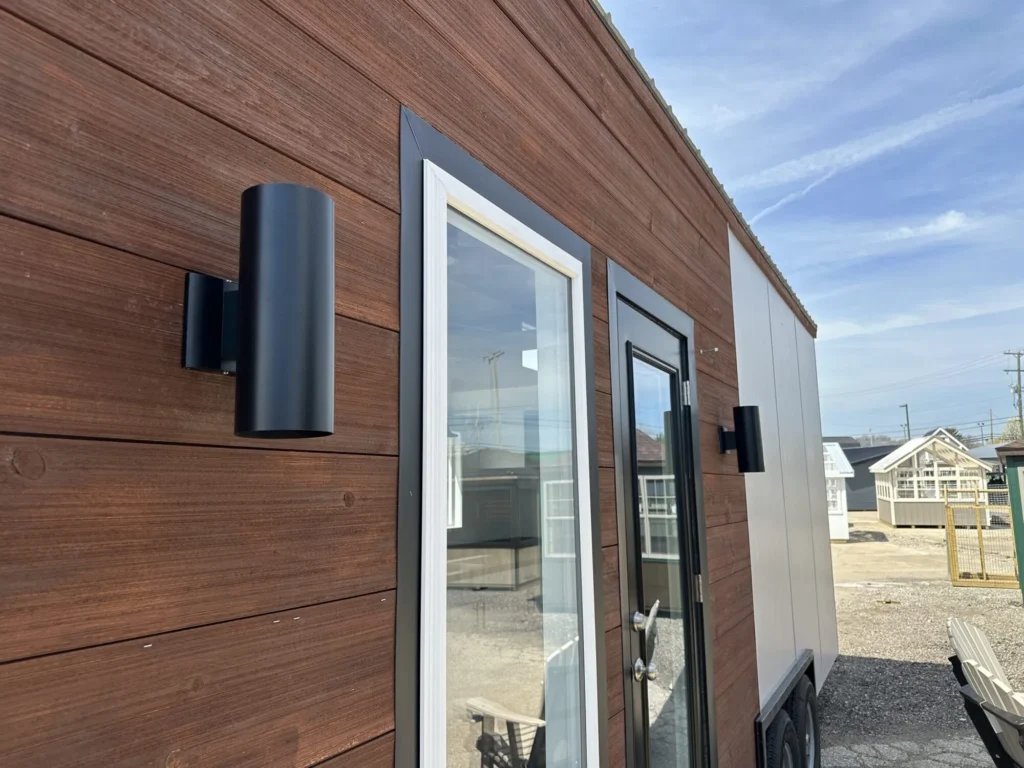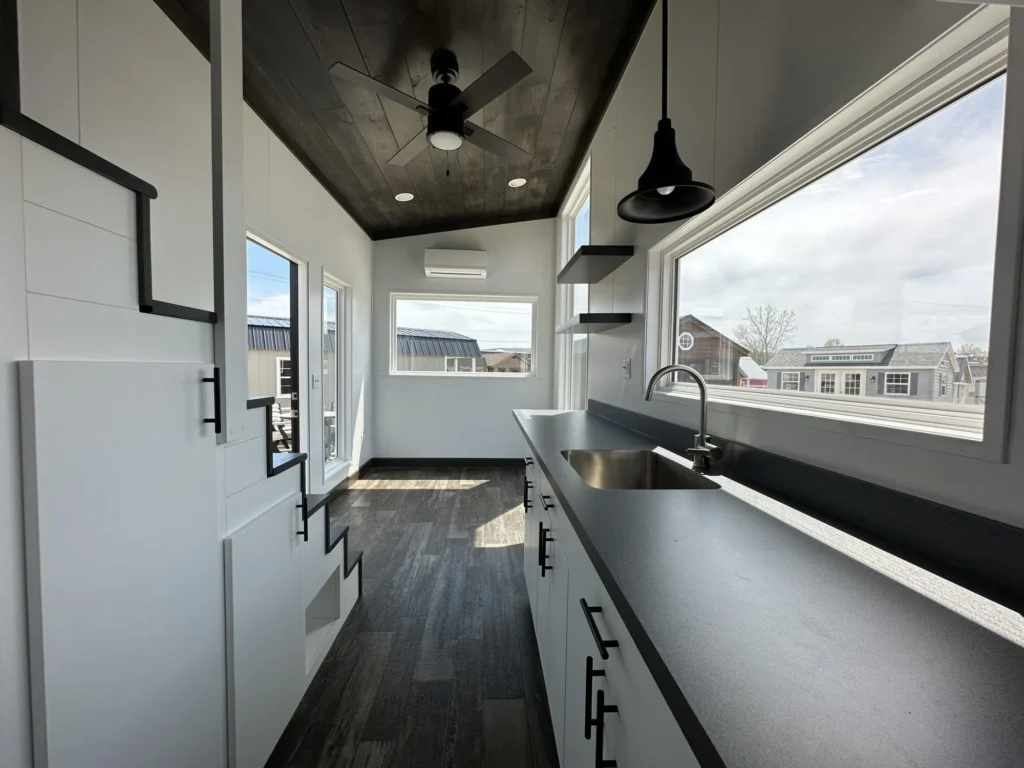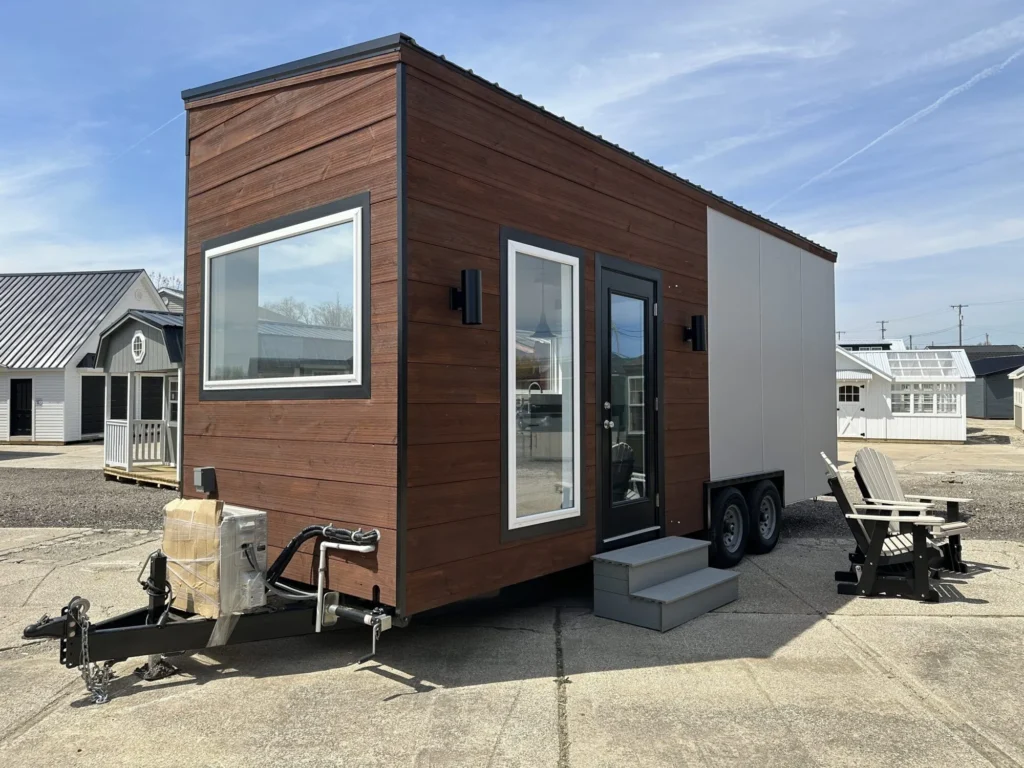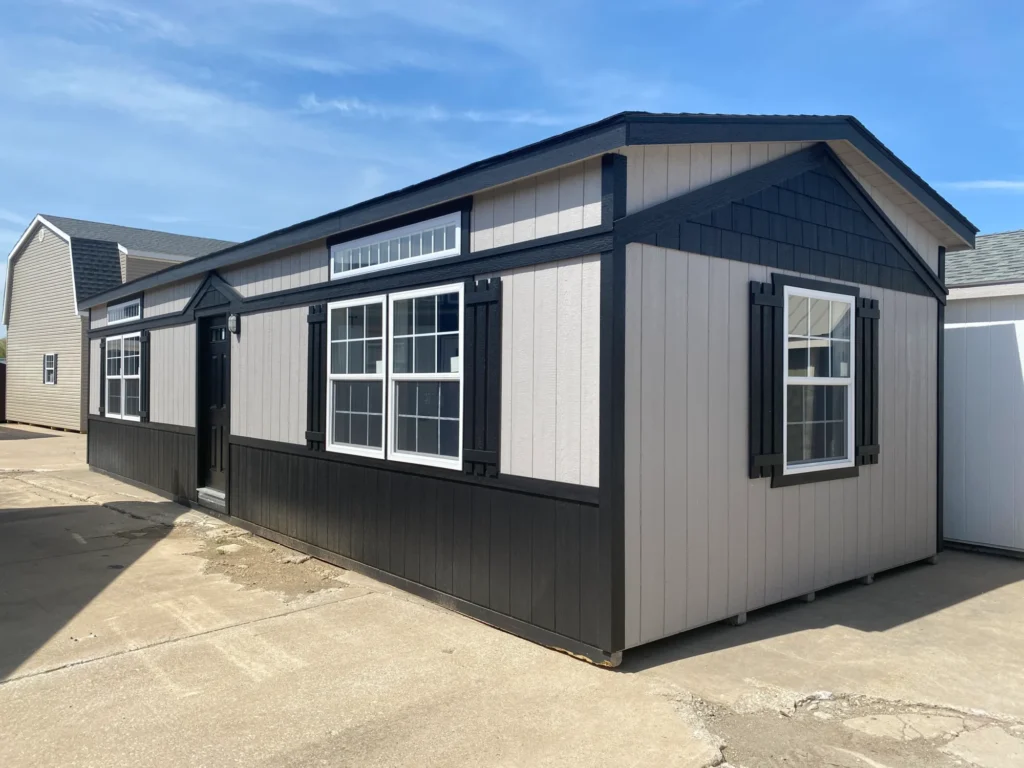Tiny homes continue to grow in popularity thanks to their mobility, affordability, and minimalist lifestyle appeal. But one of the most practical questions that often comes up in the planning stages is: how much does a tiny home weigh? This is more than just trivia; the weight of a tiny home directly impacts how it can be transported, the type of trailer required, the kind of vehicle needed for towing, and whether permits are necessary for road travel. Understanding the average weight and what factors contribute to it is essential for making informed design and logistics decisions.

Average Weight of a Tiny Home
Most tiny homes weigh between 10,000 and 15,000 pounds. However, this range can shift significantly based on materials, size, and design features. A small, stripped-down model may weigh closer to 8,000 pounds, while a larger, luxury tiny home with high-end finishes could exceed 20,000 pounds. Homes built on trailers are generally limited by road regulations, which help determine the upper weight threshold.
Tiny homes built to be mobile are typically under 13.5 feet tall and 8.5 feet wide so they can legally travel on public roads without requiring special permits. The weight of the home must also be balanced and evenly distributed to ensure safe towing and stability while in motion.

The Role of Building Materials
When calculating how much a tiny home weighs, the choice of materials is one of the most influential factors. Heavier materials like hardwood flooring, granite countertops, and tile can quickly add pounds. In contrast, lightweight alternatives such as vinyl flooring, butcher block counters, and composite siding can help reduce the load.
The frame of the home also plays a significant role. Steel framing is lighter and more rigid than traditional wood, but it can be more expensive and less forgiving during construction. Insulation type, roofing material, and interior cabinetry all add to the final weight calculation, making it important to plan intentionally if you want a more mobile-friendly home.

Weight Distribution and Towing Considerations
Even if the overall weight of your tiny home falls within legal limits, weight distribution is equally important. Poorly balanced tiny homes can sway, cause trailer damage, or even lead to accidents during transport. Most professional builders ensure the design maintains a low center of gravity and balances weight evenly across the trailer axles.
The towing vehicle you use must be rated for the weight of the fully loaded tiny home. A half-ton pickup truck is unlikely to be enough for a 10,000+ pound home. Instead, many owners rely on heavy-duty trucks such as 3/4-ton or 1-ton models, depending on the weight of their structure. Always consult your vehicle’s towing capacity and check your trailer’s gross vehicle weight rating (GVWR).
Foundation-Based Tiny Homes
Not all tiny homes are mobile. For those built on permanent foundations, the question of how much a tiny home weighs still matters for construction planning, especially when it comes to foundations and supporting structures. Foundation-based tiny homes can use heavier materials since they don’t need to be road-legal or moved. Still, weight affects excavation, site prep, and installation, all of which must meet building code requirements.

Legal and Road Safety Implications
Understanding how much a tiny home weighs is critical from a legal standpoint. Any home that exceeds 26,000 pounds in combined vehicle and trailer weight typically requires a commercial driver’s license (CDL) for transport. In addition, most states require special permits for loads wider than 8.5 feet or taller than 13.5 feet.
Exceeding weight limits without proper documentation can result in fines or unsafe travel conditions. To avoid surprises, many tiny homeowners hire professional transport services that specialize in moving oversized or heavy homes. These experts know the legal requirements and can ensure the home arrives safely.
Customization and Weight Management
Customizing a tiny home with personal features is one of the joys of this housing style, but it’s important to keep weight in mind during the process. Each design choice—from cabinetry to solar panels—adds to the overall weight. Working with an experienced builder can help manage these choices and balance comfort with mobility.
For example, Ohio Cabins & Structures helps customers select design elements that align with their lifestyle goals and transportation plans. Their team can guide you on how to build a home that meets both your functional and logistical needs, whether you’re planning to move frequently or settle on a permanent foundation.

Making Informed Decisions with Expert Guidance
When asking how much does a tiny home weigh, it’s important to remember that the number isn’t fixed. Every home is different. Size, materials, features, and utilities all influence the final weight. The best way to get an accurate estimate is to consult with your builder during the design phase and ensure every element is factored into your towing and setup plans.
Ohio Cabins & Structures builds a range of tiny homes designed for both mobility and permanence. Their expertise helps ensure your home is built with balance, efficiency, and safety in mind. Whether you’re planning to tow across the country or place your home on rural property, their guidance ensures the design aligns with weight requirements and road safety standards.
Explore available models and speak with a representative by visiting Ohio Cabins & Structures. For additional insight on towing safety and tiny home logistics, the National Association of Trailer Manufacturers is a helpful resource.
Understanding how much a tiny home weighs ensures you make decisions that support safe travel, structural integrity, and long-term usability. With proper planning, weight doesn’t have to be a limitation—it can be part of the design strategy that helps your tiny home go wherever life takes you.
